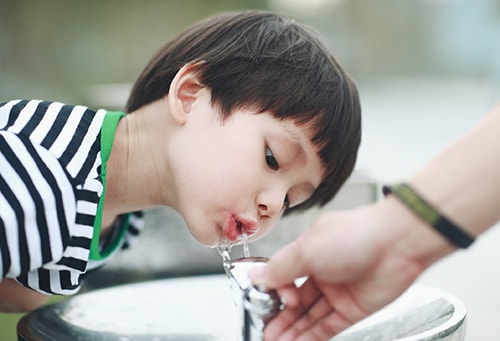Drinking Water Standards and Regulations

The U. S. Environmental Protection Agency (EPA) sets standards and regulations for many different contaminants in public drinking water, including disease-causing germs and chemicals. Read the information below to learn more about EPA’s drinking water regulations.
The Safe Drinking Water Act
The Safe Drinking Water Act (SDWA) was passed by Congress in 1974, with amendments added in 1986 and 1996, to protect our drinking water. Under the SDWA, EPA sets the standards for drinking water quality and monitors states, local authorities, and water suppliers who enforce those standards. As part of the SDWA, EPA has set maximum contaminant levels, as well as treatment requirements for over 90 different contaminants in public drinking water.
National Primary Drinking Water Regulations
National Primary Drinking Water Regulations (NPDWR) are standards and treatment techniques that public water systems must follow. These regulations protect public health by limiting contaminant levels in drinking water.
National Secondary Drinking Water Regulations
National Secondary Drinking Water Regulations (NSDWR) are guidelines to help public water systems manage their drinking water for issues not related to health, such as taste, color, and smell. Water systems are not required to follow these water quality standards for the 15 contaminants listed. Although these contaminants may not be harmful to public health, if they are in water at levels above the standards, they can cause the water to look cloudy or colored, or to taste or smell bad.
Unregulated Contaminants
The SDWA includes a process that EPA must follow to name unregulated contaminants that may require regulation in the future. EPA must publish this list of contaminants—called the “Contaminant Candidate List,” or CCL—every five years and decide whether to regulate at least five or more of the contaminants on the list (called “Regulatory Determinations”).
Bottled Water Regulations
The SDWA does not apply to bottled water. Bottled water is regulated by the U.S. Food and Drug Administration, not EPA.
Consumer Confidence Reports
Every public water system or community water supplier must provide an annual report, sometimes called a Consumer Confidence Report (CCR), to its customers. The report provides information on local drinking water quality, including the water’s source, contaminants found in the water, and how consumers can help protect their drinking water.
- Water Contamination and Diseases
- Commercially Bottled Water
- Importance of Water Quality and Testing
- EPA. Drinking Water Regulations
- EPA. Drinking Water Rule Quick Reference Guides
- EPA. Human Health and Contaminated Water
- EPA. Drinking Water Contaminant Candidate List and Regulatory Determinations
- EPA. Water Reuse Regulations Explorer
- EPA. Safe Drinking Water Act: Consumer Confidence Reports (CCR)
- U.S. Geological Survey (USGS). Water Quality Information